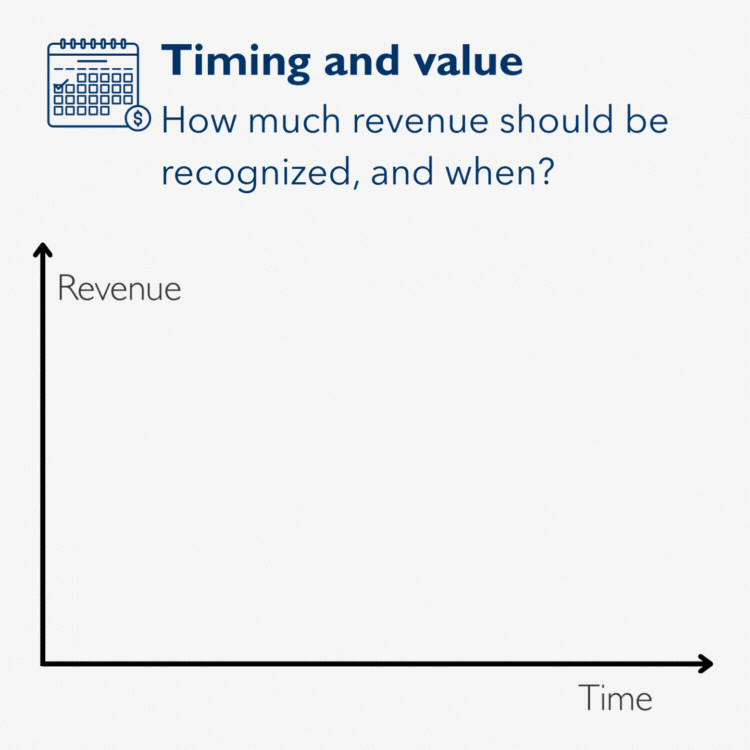Revenue Recognition Fraud
And why it matters
By Hamish Russell, Ben Walter and Trevor Wiles


Revenue is often cited as a quick snapshot of a company’s success, but how that revenue is recognized is not so simple for many industries. If revenue recognition is unsound or deliberately manipulated, the misstatement can carry financial, reputational and legal consequences.
The inevitable pressure to post high revenue figures makes improper revenue recognition one of the most common examples of accounting misstatement. Lawyers can play an important role alongside forensic accounting experts in investigating and addressing red flags.
What is revenue recognition?
Revenue recognition is an accounting principle that dictates when a company should recognise and record revenue in its financial statements. Under this principle, it is a question of timing and value: revenue is recognised when the risks and rewards of goods or services have been transferred to the customer, regardless of when the cash is received.
However, accounting standards provide room for interpretation when it comes to how companies recognise the timing and value of their revenue. This is because the circumstances of transactions vary across industries. For example, a retail business sells products every minute compared to a construction firm that works on one building over three years. These implicit differences leave room for bad actors to manipulate sales events or judgements to misrepresent revenue figures and potentially commit accounting fraud.
Risks of misstated revenue
The result of improperly recognising revenue, whether by error or fraudulent manipulation, is misstated financial accounts. There are a host of potential consequences that can ensue from a misstatement.
Financial reporting
Recognising revenue at the right time and value helps ensure that income is appropriately matched with the costs incurred to earn it. Otherwise, a company’s financial reporting will be inaccurate and misleading due to spikes or drops in profits that distort a company’s true performance. Material misstatements may require correction by restating prior year figures in the subsequent financial statements with accompanying disclosures and could potentially affect a company’s ongoing solvency.
Reputational
Misstatements can lead to reputational damage and a loss of trust from stakeholders. This loss of trust can crystallise in the form of a fall in stock value, reduced access to lending, and difficulty attracting and retaining the best talent.
Legal and associated costs
Misstatements could trigger investigations from regulators to assess if the accounting practices were appropriate and whether the company had adequate compliance procedures to detect and prevent fraud. If practices are found to have been inappropriate or fraudulent, then penalties can include fines, monitorships, and possible criminal charges could follow.
Drops in share value could also lead to securities class actions as shareholders seek compensation for the fall in value of their investment.
Operational
Company management use revenue and profit trends to make strategic operational decisions, such as budgeting, hiring, expansion, bonuses, and commissions. Depending on the composition of management and decision-making structures, inaccurate revenue recognition could lead to bad commercial decisions.
Revenue recognition investigations
In our experience, best practice when faced with red flags or allegations of inappropriate revenue recognition is to quickly conduct a privileged investigation by independent lawyers and forensic accountants. When presenting to external auditors, regulators, or investigating authorities, they must trust that the investigation was thorough, independent, and transparent.
An effective presentation of the forensic procedures applied and the findings, including corrective accounting adjustments, will be imperative in allowing all parties to resolve any issues and minimise further disruption to the company. Beyond the investigation, advisors can also help determine matters such as internal control gaps and compliance remediation.
An investigation of accounting misstatement should include a review of financial records (structured data), email and mobile phone data (unstructured data), and interviews of relevant company personnel. A considered approach is required to build the facts and establish what is defensible in the specific context of the business and jurisdiction in question.
The review of financial records will usually involve detailed analysis of sales trends, particularly any instances of large transactions towards period end, and comparison to previous periods and historic levels of business. Further procedures chosen to review structured data will depend on the specific allegations and conduct in question.
What are the red flags?
What are the red flags of revenue recognition frauds that should trigger a call to independent forensic investigators?
There are different ways to overstate revenue, each with their own red flags that call for bespoke investigative techniques. In this series, we offer further insight on the most common frauds, their associated red flags, and how they can be addressed.
"When presenting to external auditors, regulators, or investigating authorities, they must trust that the investigation was thorough, independent, and transparent."
Learn more about common revenue recognition frauds
Channel stuffing is a deceptive revenue recognition practice where a company inflates its sales figures by pushing more products onto its distributors or retailers than they need or can reasonably sell. Read more.
This method gradually recognizes revenue over the duration of a long-term project based on the extent of work completed rather than all at once upon project completion. The most common approach compares costs incurred to total estimated costs at completion, but estimates require judgement. Read more.
Also known as ‘circular trading’ or ‘Lazy Susans’, refers to a series of unethical sales or investment transactions through which goods or services are cycled from one company to a third party, and back to the original company at the same or similar price. The commercial nature of the transaction is deliberately obscured. Read more.
A bill-and-hold arrangement is a sales transaction in which revenue is recorded before the delivery or shipment of goods to a company’s customer. Such arrangements are considered an aggressive method of revenue recognition, and are generally frowned upon by regulators. including the SEC. Read more.

